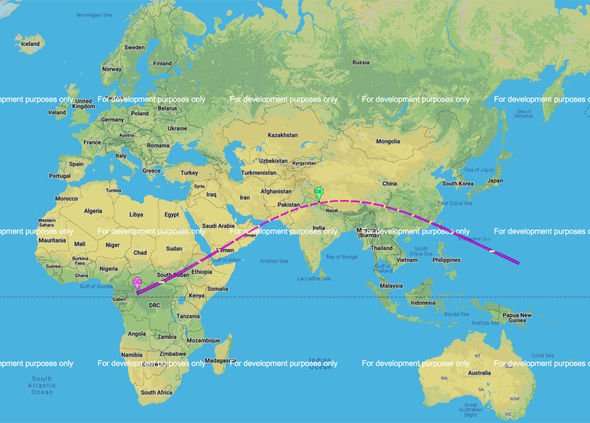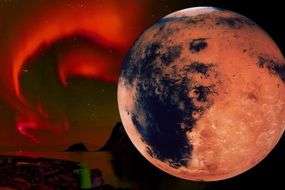A SOLAR ECLIPSE this week will turn the Sun into a beautiful ring of fire – but how often does an eclipse occur?
The Moon will pass in front of the Sun this Sunday (June 21) and obscure all but the outer edges of the star. The incredible spectacle, known as an annular eclipse, will create a ring of fire effect in the sky. The path of the eclipse will take it across parts of central Africa, the Middle East and South East Asia.
Trending
According to the US space agency NASA, much of the Eastern Hemisphere will also be treated to a partial eclipse of the Sun.
Unlike a total solar eclipse, the Moon will not cover the entire face of the Sun.
Due to an astronomical coincidence, the Moon and the Sun appear to be roughly the same size when viewed from Earth.
As a result, the Moon can cover the Sun’s entire face for minutes at a time during totality.


READ MORE
-

NASA news: Curiosity rover snaps a stunning picture of Earth and Venus
During an annular eclipse, however, the Moon is farther from Earth than usual and is not big enough to swallow the Sun.
NASA said: “Because the Moon is farther away from Earth, it seems smaller.
“It does not block the entire view of the Sun.
“The Moon in front of the Sun looks like a dark disk on top of a larger Sun-colored disk.
“This creates what looks like a ring around the Moon.”
You should never look directly at any type of solar eclipse without dedicated protective gear.
How often is there a solar eclipse?
This weekend’s solar eclipse is the first of the year after an annular eclipse on December 26, 2019.
It will be followed by a total eclipse over the Pacific, South America and Antarctica on December 14, 2020.
There are usually between two and five solar eclipses each year and they are only visible from limited areas.
As a rule of thumb, a total eclipse happens about every 18 months.
DON’T MISS…
SpaceX: Watch the moment Starlink separates from Falcon 9 [VIDEO]
NASA’s Hubble snaps a crystal-clear view of distant galaxy [PICTURES]
UK-built space probe makes its first pass of the Sun [INSIGHT]


READ MORE
-

Space shock: Aurora Borealis effect detected on MARS for first time
Stargazers can, however, expect lunar eclipses to be a bit more frequent.
It is also very rare for a solar eclipse to strike twice in the same area.
NASA said: “A partial eclipse, when the Moon doesn’t completely cover the Sun, happens at least twice a year somewhere on Earth.
“But not everyone experiences every solar eclipse. Getting a chance to see a total solar eclipse is rare.
“The Moon’s shadow on Earth isn’t very big, so only a small portion of places on Earth will see it.”
You have to be on the planet’s dayside to see an eclipse unfold.
Then, you have to find yourself within the path of the Moon’s shadow.
NASA said: “On average, the same spot on Earth only gets to see a solar eclipse for a few minutes about every 375 years.”
There will also be two more lunar eclipses this year: a penumbral eclipse on Juley 4 and a penumbral eclipse on November 29.
Sourse: www.express.co.uk





